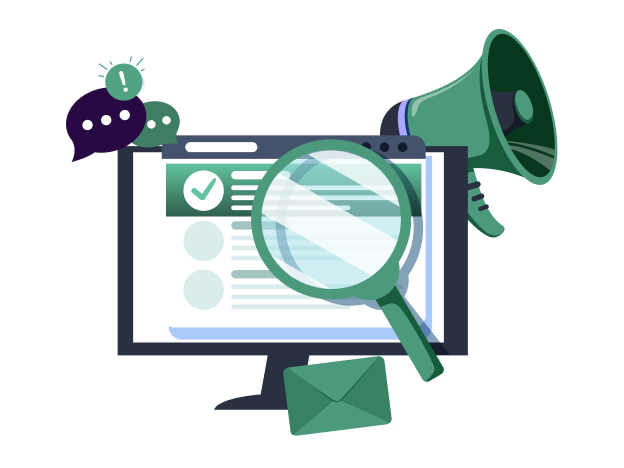What exactly is a landing page?
A landing page is a lead-generation website focused on specific campaigns and web traffic. It allows you to capture a user’s contact information via a lead form.
Landing page optimization
Landing page optimization involves fine-tuning every element of this page to increase conversions. Data analysis makes adjustments based on accurate information that can be collected before the page is launched.

12 tips to optimize your landing page for more conversions
A good conversion rate demonstrates a website’s effectiveness in converting web traffic into valuable leads. Here are 12 practical tips to help you improve the effectiveness of your landing page:
1.Review what needs to be fixed on your landing page: Use analytics tools to identify elements of the page that need to attract attention or lead to conversions. Focus on improving these areas to make your site more effective.
2.Know who you are targeting: Understanding your audience is critical. Tailor your content and site design to their needs, preferences, and behaviors to better engage them.
3.Deliver consistent value: Your landing page should communicate the benefits of using your offering and highlight how you solve customer problems.
4.Ensure all critical information is well placed: Place essential information where it can be seen without having to scroll down the page. This allows users to see what is on offer quickly.
5.Respond to user intent: Your message and offer should respond to a specific user need or request. The simpler, the better.
6.Attention-grabbing calls to action (CTAs): Create simple and engaging CTAs that effectively encourage users to take a desired action, such as signing up for a newsletter or downloading a guide.
7.Add trust signals: Include reviews, trust marks, or certifications that build trust and credibility for your brand.
8.Search engine optimization (SEO): Ensure relevant keywords, meta tags, and content adaptation to make your site more visible in search results.
9.User Experience Testing and Optimisation: Conduct regular A/B testing to see which elements of the site perform best in conversion and what changes positively impact the user experience.
10.Monitor on-page behavior: Analyse how users interact with the site, using tools such as heatmaps (e.g., Hotjar) to discover what catches their attention and how they navigate the site.
11.Ensure the page loads optimally: The speed of the page is crucial to maintaining user attention. Optimize images and code so that the page loads instantly.
12.Make sure your site is responsive: In an age dominated by mobile devices, your site needs to be easy to navigate on smartphones and tablets.
Focus on landing pages that bring the most conversions
1. Lead generation pages: This type of landing page is the most common model used to collect contact information from users, such as name and email address. These pages contain forms that users fill in to receive something in return, such as a free report, analysis or ebook. A distinctive feature is the lack of navigational elements, which eliminates the possibility of leaving the site by browsing other parts of it. It is an excellent tool for creating an email database.
2. Click-Through Landing Page:
This landing page aims to persuade the user to click through and move on to the next page, for example with price details or an order form. It focuses on presenting the value of the product or service without directly asking the user to buy or subscribe.
3. Pricing Landing Page:
The pricing page presents information about the different pricing packages and is one of the key pages for purchasing decisions. It should be optimally structured to convince people to buy, with clearly presented options, a money-back guarantee and answers to frequently asked questions that can allay users’ doubts.
Tools to help you optimize your landing page
You need analysis and testing tools to run marketing campaigns using a landing page effectively. These tools will help you understand user behavior and the effectiveness of different page elements.
Google Analytics
Allows detailed analysis of website traffic, visit sources, and user behavior. Benefits: Free, extensive reporting features and integration with other Google tools are available.
Unbounce
It allows you to create, publish, and test landing pages without coding. Benefits: include easy-to-use drag-and-drop interfaces, A/B testing, and dynamic copy to match PPC campaigns.
Crazy Egg
It provides heat maps, user session records, and scroll analysis to help you understand how visitors interact with your site. Benefits: intuitive visualizations, easy-to-identify areas for improvement, and helpful in optimizing page layout.
Hotjar
Similar to Crazy Egg, it provides heatmaps and session records, as well as the ability to create surveys and feedback forms. Benefits: a comprehensive understanding of user experience and direct feedback from visitors.
Optimizely
A/B and multivariate testing platform for experimenting with different versions of a website. Benefits: Easy to implement tests, supports data-driven decision-making, and can personalize user experience.
User Testing
It provides feedback from real users through usability testing. Benefits include a deep understanding of user needs and frustrations and the ability to observe product interaction in a natural environment.

Benefits of Landing Page Optimisation
Increased conversion rate: Landing page optimization allows you to better match your content and offers to your visitors’ needs and expectations, leading to higher conversions.
Improved ROI from advertising campaigns: An optimized landing page uses the traffic generated by paid advertising campaigns more effectively. This translates into more leads or sales at the same or lower advertising cost.
Better audience understanding: The optimization process requires analyzing user behavior data. This provides a deeper understanding of the preferences and needs of potential customers, allowing you to reach them more effectively with your message.
Increase trust and credibility: Tailoring content and visual elements to your target audience builds trust, which is key to increasing conversions.
Improved website performance: Optimization often involves improving page load speed and responsiveness. This contributes to better rankings in search results and improves the overall user experience. This increases the likelihood that they will take the desired action.
Optimizing your landing page is critical to increasing conversions and ROI on marketing campaigns. An effective website builds trust, responds to the user’s needs, provides value, and is easy to navigate.

